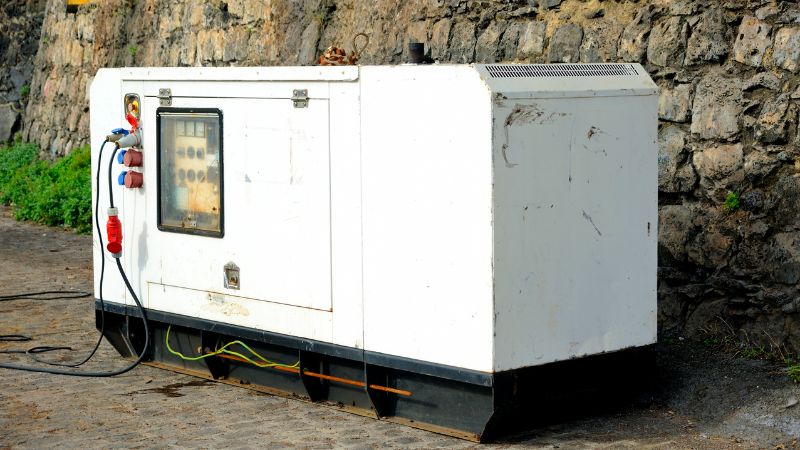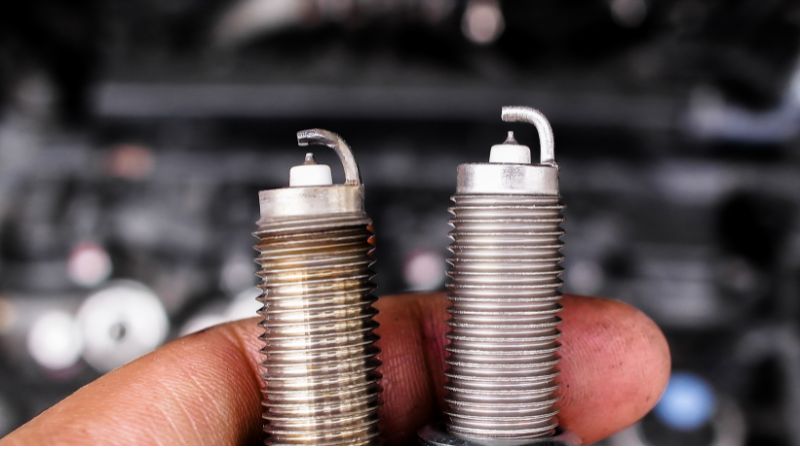
A generator that stops working unexpectedly is more than an inconvenience; it can feel like a betrayal, especially during a power outage. If you find yourself constantly restarting your unit, you’re likely dealing with one of a handful of common issues.
Luckily, many of the reasons a generator shuts down are simple to diagnose and fix. Let’s walk through the eight most common causes and how you can address them.
8 Common Reasons Your Generator Shuts Off (And How to Fix It)
Understanding why your generator keeps shutting off is the first critical step to restoring your generator’s reliable operation. The following eight causes and solutions can help you identify the problem and get your generator running again.
1. Low Oil Level
This is the number one reason for an automatic generator shutdown. Modern generators are built with a crucial safety feature: a low-oil sensor.
The Cause: Your generator’s engine needs a proper amount of oil to lubricate its moving parts. If the level drops too low, the resulting friction and heat can quickly cause severe engine damage. The sensor detects this and shuts the unit off to prevent a costly repair.
The Solution: This is the first thing you should check.
Method: With the generator off and cool, locate the dipstick. Wipe it clean, reinsert it fully, and then check the level. If it’s low, top it up with the type of oil recommended in yourmanufacturer’s manual. Making this a regular part of your maintenance routine is the best prevention.
2. A Clogged Air Filter
For your generator to run, its engine needs to breathe. The air filter is its lung, and a dirty one can choke it into silence.
The Cause: Over time, the filter traps dust and debris to keep them from entering the engine. When it becomes clogged, it restricts the airflow. This disrupts the critical fuel-air mixture, causing the engine to run poorly, overheat, and eventually shut down.
The Solution: Ensure your generator can breathe easily.
Method: Locate the air filter housing (check your manual) and remove the filter. If it’s only dusty, you can clean it by tapping it out or gently washing it. Let it dry completely before reinstalling. If it’s caked with grime or damaged, simply replace it with a new one.
3. Fuel System Problems
If the engine isn’t getting the right fuel, it won’t run. Issues here are a very frequent source of trouble.
The Cause: Old gasoline can break down and form gummy deposits that clog the carburetor and fuel lines. This prevents fuel from circulating properly. Water contamination or simply having low fuel can also cause the engine to sputter and die.
The Solution: Focus on clean, fresh fuel.
Method: Check the fuel tank. If the gasoline is old or smells stale, drain it completely from both the tank and the carburetor. Refill with fresh fuel, and consider using a stabilizer if you store the generator for long periods. A clogged fuel filter should be replaced.
4. Overloading the System
Every generator has a limit. Pushing it beyond its capacity is a direct path to a shutdown.
The Cause: When you plug in more appliances than your generator can handle, you create an overload. The electrical system is strained beyond its safe operating limit, and the internal breaker will trip to prevent damage to both the generator and your devices.
The Solution: Be mindful of your total power consumption.
Method: As a general guideline, add up the wattage of everything you want to power. Ensure this total is less than your generator’s maximum output. If the unit shuts down, turn it off, unplug a few items, and restart it. Responsible load management is key to consistent performance.
5. Worn-Out Spark Plugs

The spark plug is a small part with a big job: creating the spark that ignites the fuel to power the engine.
The Cause: Spark plugs can get coated with carbon deposits or simply wear out after many hours of use. A fouled or defective plug will produce a weak spark, leading to rough operation, difficulty starting, and shutdowns under load.
The Solution: A simple replacement can work wonders.
Method: With the engine cool, remove the spark plug wire and unscrew the plug. Look at the electrode—if it’s blackened, corroded, or cracked, it’s time for a new one. Install a new plug with the correct gap as specified in your manual.
6. A Weak Battery
On models with an electric start, the battery is a critical part of the system that’s often overlooked.
The Cause: The battery doesn’t just start the engine; it often powers the digital control panel and sensors. An old or failing battery may not hold enough charge, causing the generator to fail to start or shut down unexpectedly due to faulty sensor readings.
The Solution: Check the battery’s health.
Method: Use a multimeter to test the voltage. A significant reading below 12 volts (for a 12V system) indicates a weak battery. Try charging it fully. If it can’t hold a charge, replacement is your best option for reliable backup power.
7. Engine Overheating
Generators produce a lot of heat and are equipped with cooling systems to manage it.
The Cause: If the cooling air vents or fins are blocked by dirt, leaves, or grass clippings, air cannot circulate. The engine temperature will rise rapidly, triggering an automatic safety shutdown to prevent internal damage.
The Solution: Keep the unit clean and clear.
Method: Always operate your generator in an open, well-ventilated area. Periodically, inspect the cooling fins around the engine and use a soft brush or compressed air to clear any debris. This simple habit is a powerful preventive measure.
8. A More Complex Internal Issue
Sometimes, the problem lies with a failed internal component.
The Cause: A faulty sensor, a malfunctioning voltage regulator, or another electrical component can send incorrect signals to the generator’s main control board. The system then shuts down as a precaution, even if there isn’t an immediate mechanical threat.
The Solution: This is when professional help is warranted.
Method: If you’ve checked all the common issues above and your generator still won’t run properly, it’s time to consult an expert. A certified technician has the diagnostic tools to identify the specific faulty component and perform the necessary repair safely and efficiently.
FAQs
How often should I perform basic maintenance on my generator to prevent these issues?
For reliable operation, you should check the oil level and visually inspect the air filter before every use as part of your regular maintenance. A more thorough maintenance routine—including changing the oil, replacing the air and fuel filters, and checking the spark plug—should be performed after every 50-100 hours of use or at least once per season, as recommended in your owner’s manual.
The weather is cold. Could that be causing my generator to shut off?
Yes, absolutely. Cold weather can exacerbate fuel issues. Old fuel can form waxes or gums that clog the carburetor. Condensation can also form in the fuel tank, leading to water contamination, which disrupts combustion. Using a fuel stabilizer and storing the generator with an empty carburetor or treated fuel can prevent this.
I suspect a faulty sensor is causing my shutdowns. Is it safe to bypass it?
No, it is not safe. Bypassing a safety sensor (like the low-oil or overheating sensor) is extremely dangerous. These sensors are critical for preventing catastrophic engine failure or even fire. If you genuinely suspect a sensor is faulty, the correct solution is to have it tested and replaced by a qualified technician.
My generator is stored for long periods. How can I prevent problems when I need it?
To prevent startup issues after storage, practice “fuel management.” Either drain all the fuel from the tank and carburetor before storing it, or add a fuel stabilizer to a full tank and run the generator for a few minutes to circulate the treated fuel through the system. This prevents the carburetor from getting clogged by old, stale gas.
Final Thoughts
Dealing with a stubborn generator can be frustrating, but a systematic approach will usually reveal the problem. By starting with the simple checks—oil, air filter, fuel, and spark plug—you can resolve the vast majority of issues yourself. Consistent, basic maintenance is the ultimate key to ensuring your generator provides reliable power when you need it most. For more complex problems, don’t hesitate to call a professional to get your system running smoothly again.
